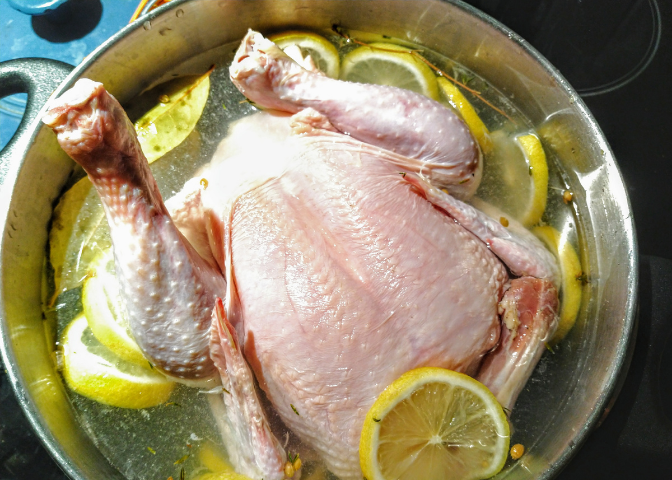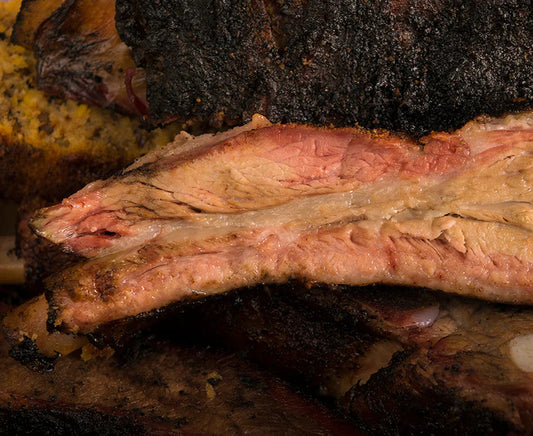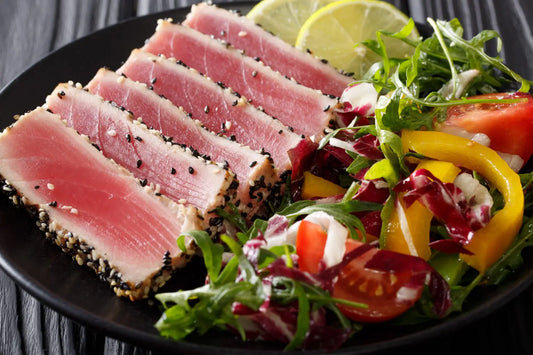If you’re looking for the best way to cook the chicken to get that juiciness everyone craves, tenderizing it is vital. Not only does it keep your meat from toughening up, but it also makes for a better taste.
Tender, juicy, and flavorful chicken is the ultimate compliment for any home cook who loves to grill. When you’re cooking, the last thing you want is tough, rubbery chicken. It’s just not pleasant to eat. So how do you tenderize chicken?
Tenderizing meat is the practice of breaking down collagen in muscle fiber to make the meat more tender. Here are the best methods to tenderize chicken, along with some helpful tips and tricks.
Pound the Bird
This is one of the most effective methods of tenderizing chicken. It’s simple, and you probably already have everything you need in your kitchen.
- You can do this using a specific meat tenderizing tool like a mallet with a bumpy surface or a rolling pin. The mallet is a better choice because it is specifically made to pound meat. You can use other implements like a rolling pin, a hammer, a heavy skillet, or even a saucepan.
- Pounding works best for boneless chicken. Debone bone-in cuts first before pounding them. Crushed bones are a real nuisance you want to avoid.
- Cover the chicken in plastic wrap or a ziplock bag before pounding. This will prevent bits of chicken from flying all over your countertop during the process and seal in the chicken’s juices. Avoid using a material that can tear easily, like foil or waxed paper.
- Avoid beating the chicken too hard, or you will damage it. The goal here is to get an even thickness and consistency, which improves the texture of the chicken. Take your time to ensure you get even thickness before unwrapping and cooking it.
It is important to note that pounded chicken will cook faster than thicker cuts of chicken. Adjust your cooking time accordingly to avoid overcooking it, which would again leave you with a dry mess.
Marinate It
Marinating the chicken serves two purposes: adding flavor and tenderizing it. Soak the chicken in a marinade for at least one hour to get the best out of it.
Keeping it in the marinade overnight will give you much better results. Place the container holding the chicken and the marinade in the fridge until you are ready to cook.
Milk-based marinades
Yogurt and buttermilk-based marinades are the best because they contain a variety of acids and enzymes that tenderize the meat. You can pair the marinade with your spices of choice to make the chicken more flavorful.
If you opt for a yogurt marinade, consider the seasoning carefully. You want to get complimentary flavors that will not overshadow each other.
- Some yogurt flavors, such as vanilla, may be unpalatable when cooked. Fruit-flavored yogurts such as lemon and coconut can give you wonderful results when paired with chicken.
- Plain, low-fat, or full-fat yogurt pairs well with most herbs used to prepare chicken dishes.
Buttermilk is milder than yogurt and doesn’t interfere with the chicken’s flavor. You can use milk and vinegar to prepare a substitute if you don’t have any buttermilk on hand.
To prepare, add a tablespoon of white vinegar to a cup full of whole or low-fat milk. Wait for the mixture to curdle before using it on the chicken.
Other marinade ideas
Though a homemade marinade is healthier because it has no chemical preservatives, sometimes you don’t have time to prepare one. Luckily, you can choose from thousands of store-bought marinades. Here are a few things to remember:
- Acid-based marinades can dehydrate chicken and make it tougher if you keep it in for long. Use vinegar and lemon juice sparingly for best results.
- Use fruit marinades with pineapple, kiwi, or mango if you want very soft chicken. These ingredients will give you a very mushy chicken.
- Soft drinks serve as excellent marinades. Add a pinch of salt for even better results.
Rinse the chicken thoroughly before cooking.
Observe the Correct Cook Times and Temperatures
Bad timing will undo everything you did during the preparation stage. You’ll end up with dry and tough chicken if you overcook it and a health hazard if you undercook it.
Smoking the chicken in a professional food smoker will help you avoid that. Just get your smoker to the temperature recommended in your recipe and let it do the rest of the work for the recommended time.
Keep a meat thermometer close to confirm the internal temperature. You can take the chicken out of the smoker once it reaches 165 °F (74 °C).
Allow the meat to rest for a few minutes to allow the “carryover heat” to finish cooking it and the juices to be reabsorbed. This will give you sweet and succulent chicken when you are finally ready to serve.
Final Thoughts
An improperly cooked chicken will end up tough, chewy, and tasteless – something no one wants. You can even combine these tips and see how that goes. For instance, would a pounded and marinated chicken be more flavorful and succulent? Have fun experimenting the next time you crave chicken.
Interested in learning more about chicken? Check out the articles we’ve prepared for you below:
The Right Way To Tenderize Chicken
How to Butterfly and Spatchcock a Chicken
What’s Not Great About Smoked Whole Chicken?
Visit us at the Bradley Food Smoking blog for more tips and tricks.




